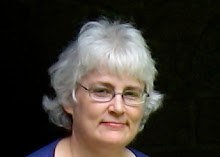I admit it: I am a creature of enthusiasms. My family and friends know this about me; they are never shocked when I come up with yet another wild hair idea. There is a certain amount of eye rolling and sighing that goes on and even some heel-digging resistance to getting recruited into my enthusiasms. But resistance is futile and many of them get swept away .
So it is with mushrooms. They have been calling to me for some years and this fall in particular, I am heeding the call. They are by nature wacko-weirdo, creepy, fascinating and downright beautiful. My friend Rain spoke recently of walking with her two year old son around their wetland property. They came across some mushrooms fruiting profusely. Hawk leaned over and stuck his face in them and said loudly: “What is THAT?” You don’t have to be two years old and seeing mushrooms for the first time to feel the same way.
For many years I was an armchair mushroom freak. There are a lot of good mushroom resources: I love David Arora’s book All that the Rain Promises. Paul Stamets’ book Mycelium Running is another wonderful read. But after some years of reading about mushrooms, I decided it was time to get my hands in the soil and on the mushrooms. So this spring, we planted a bed of Stropharia annulato or King Stropharia aka Wine Caps or Garden Giants.
We didn’t get started until early May. Ideally a stropharia bed should be in by March 1st. But I struggled to find wood chips and finally bought some alder sawdust from the local bark store.
For this project we recruited our gardener friend David. As a professional gardener he knew about plants, but had never put in a mushroom bed before. I hadn’t either, but put together my best guess from all the reading I’d done.

We put the bed in at the end of my herb garden. Stropharia likes to have plant friends nearby and lots of edges, so this seemed like the best place. A place of dappled sunlight, up against the foundation of the house, and with a soaker hose laid in; all these factors seem to create a likely spot.
So in a 4 foot by 3 foot space, David dug out all the soil down the subsoil; the idea here is to removed any other fungal elements that might compete with the stropharia. He put down a layer of alder sawdust, then sprinkled in the stropharia spawn, a commercial product that is full of the fungus to get started. He then repeated the process, topping off the bed with 2 inches of alder . We then soaked the bed well; this being May in western Washington, we knew the rains would keep it well watered for several weeks, which turned out to be true. By early July the dry season finally began and we switched over to using the soaker hose for an hour twice a week. Then I sat back and waited.
I went out regularly to the garden and saw nothing. Nada, zip. I was discouraged. Paul Stamets says the soil needs to be at least 60 degrees for the mushrooms to pop up, so you can expect to see them in mid or late July.
I checked in July. Nada. I checked in August. Nothing. I was getting depressed. Then I put them out of my mind as a failed attempt.
In mid September I needed to collect some mugwort. I went out to the garden and OH MY GOD there were several clumps of stropharia, tangled in with branches of mugwort. We had pulled it off! We had put out an invitation to these mushrooms and they graced us with their presence.

And how graceful it was. Through early November in an unseasonably warm fall, Glen went out to the garden and regularly collected a half pound of mushrooms every two-three days. We learned how to cook them: sliced in a pan of butter & olive oil, sautéed 5-7 minutes until the pan is dry and the mushrooms are golden-brown with crispy edges. We put them in a sauce and poured them over roasted Delicata squash. OMG. Glen made polenta cakes and we poured the mushrooms over these. We put them in stews and soups and stroganoffs. OMG. You get the point.

And to every recipe that we made, they added a rich, complex nutty flavor. They were an excellent meat substitute. And though not much is known about the medicinal qualities of Stropharia, I believe all mushrooms at the very least provide important adaptogenic support to the immune system. I think they keep our immune systems tuned up against all kinds of attacks. As an herbalist, I believe that the best way to take herbs ( and mushrooms) is as food built into our daily lives. And so it proved with our friend Stropharia.

Janet Partlow
Resources:
photo of sawdust spawn from Field & Forest Products
"Beauty shots" of Stropharia by Pam Kaminski
All other photos by Janet Partlow and Glen Buschmann
Field & Forest: www.fieldforest.net/
Fungi Perfecti: www.fungi.com/
South Sound Mushroom Club: www.southsoundmushroomclub.com/
A fabulous YouTube video of stropharia growing in time lapse photography: http://www.youtube.com/watch?v=5Oq82zrQB04







.jpg)









